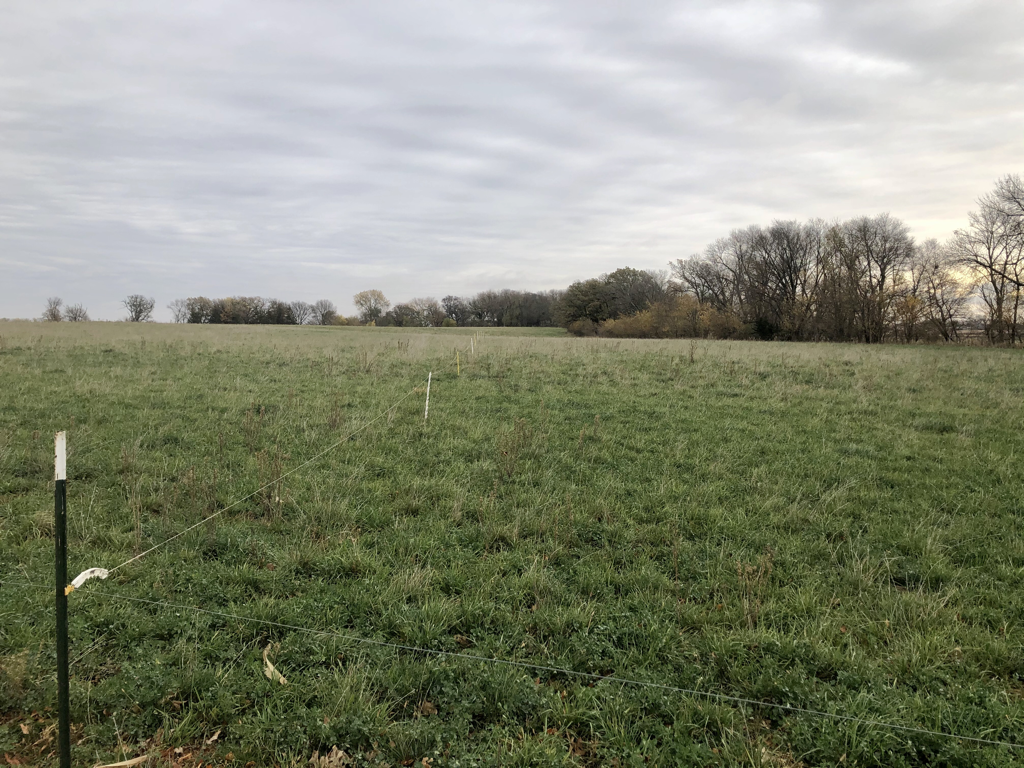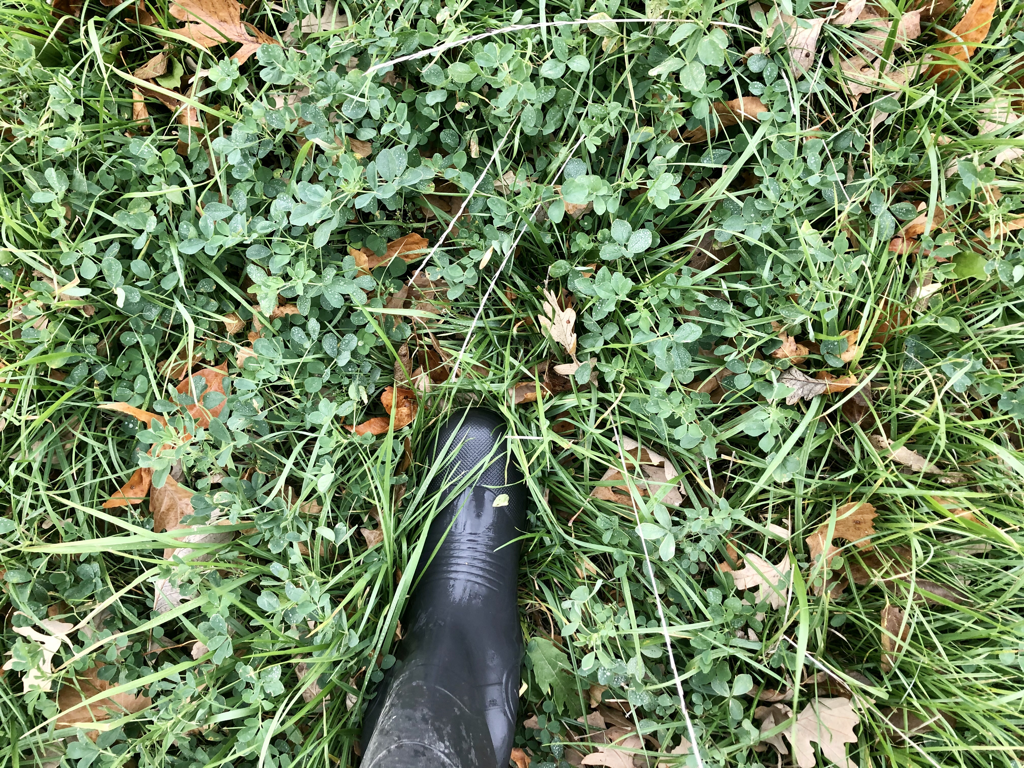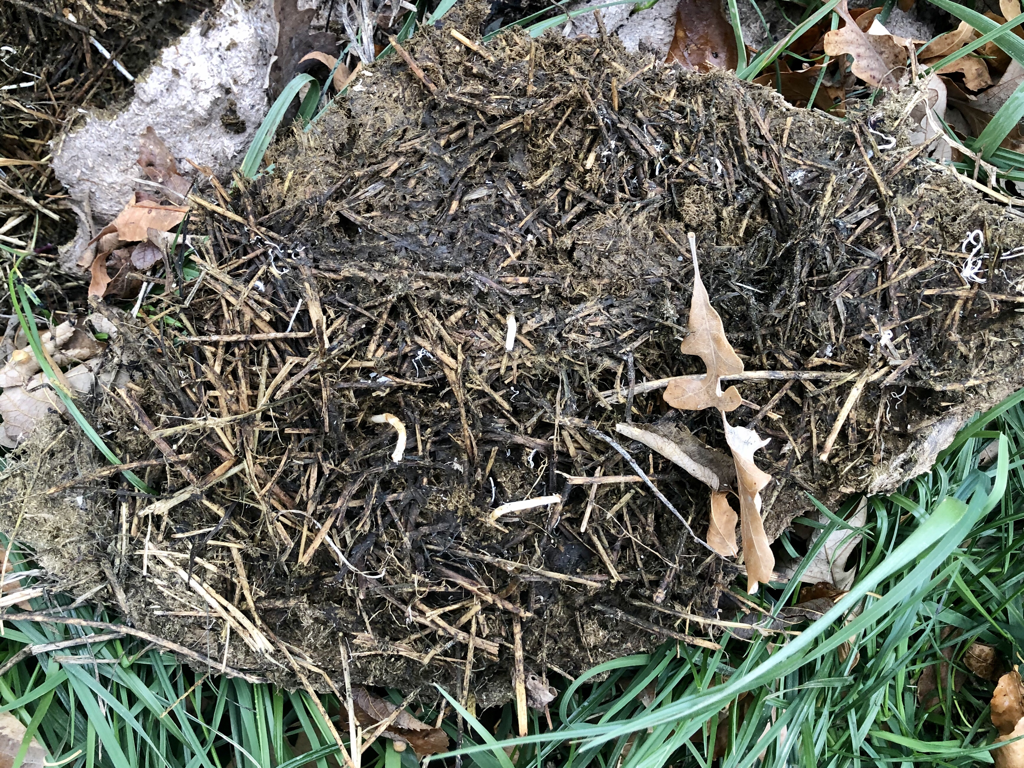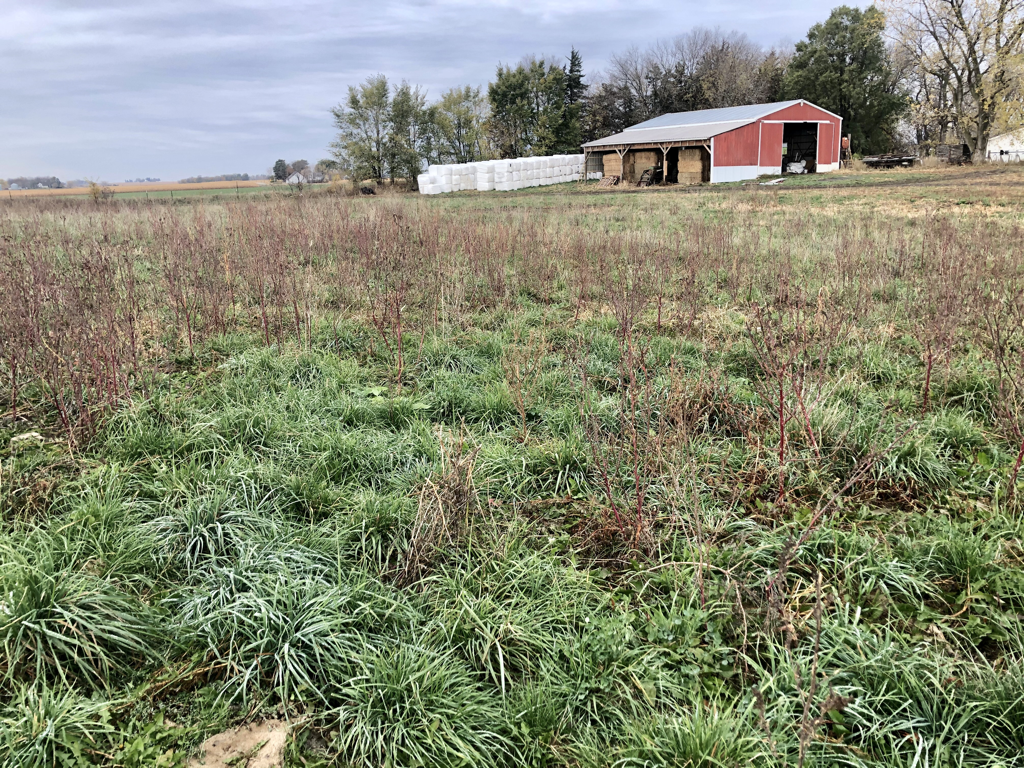For background, prior to 2012 when we moved here, this was a crop field, most likely in a corn-soybean rotation. In 2011 it grew corn for the last time. In the spring of 2012 it was seeded to alfalfa by our neighbors who were subleasing it from is. It was hayed 3-4 times a year through 2017. It got two applications of fertilizer during that time.
In the spring of 2018, we took an early first cutting of hay, then tilled in the alfalfa (and some grasses by that point), and seeded sorghum-sudangrass. Some of that was hayed, but mostly it was grazed. The plan was to drill oats the following spring, with an underseeding of pasture grasses and legumes. However, that spring was so wet that we couldn’t get into the field until June, so we no-tilled in sudangrass. After the second grazing of the sudangrass in August, we no-till drilled an alfalfa-grass mix. It got a slow start due to moist conditions all fall and competition from the sudangrass.
In the spring of 2020, things finally dried out and the seeding started to grow, but then we ended up with drought conditions from July to present day, so it never really had ideal growing conditions. The good thing about drought is that the plants that do grow develop very strong and deep root systems.
The first thing I notice is lots of grass and not many legumes.
Next, I see a broadleaf “weed”, which I put in quotes just because weeds are relative, and depend on your perspective. Not sure on it’s ID, but it’s some type of aster. It is more beneficial to the pasture than it is a problem. It is growing here because there are openings in the pasture stand, and possibly some surface compaction from the cows’ hooves “pugging” the soil surface when the soil was damp the last several years. It is an annual, so can fill that gap more quickly than a perennial plant. It is helping break up the compaction and bring up nutrients from the subsoil.
Third, behind the weed I see a dark green, thick patch of grass where a cow peed. Cow urine is very high in nitrogen, so this shows that the other areas may be lacking in nitrogen for optimal grass growth. Optimal soil nitrogen allows not just for better-yielding pastures, but also for better quality, higher protein pastures. Here at Lost Lake Farm we do not use artificial fertilizers, so we can bring in nitrogen by spreading manure or compost, feeding hay on the pasture, or by seeding more legumes into the stand. Legumes, such as alfalfa and clover, have symbiotic bacteria that fix atmospheric nitrogen. We also offer the cows salt, kelp, and minerals, which brings to our farm needed micronutrients.
Fourth, I see tree leaves, an excellent source of carbon.
when drilling in the seed mix. Annual foxtail grass filled this gap during the summer, which the cows love to graze when in its vegetative state (not gone to seed). It will be interesting to see what happens here next year. I might try to frost seed some red clover here in late winter.
If you made it this far, thanks for reading! Feel free to comment with questions, observations, or corrections.
-Kevin











